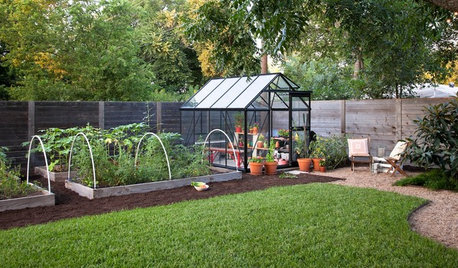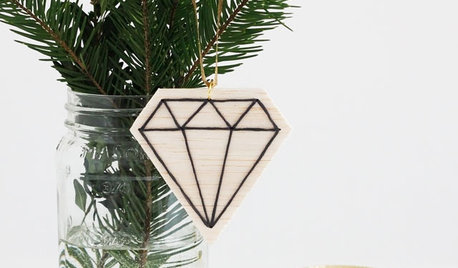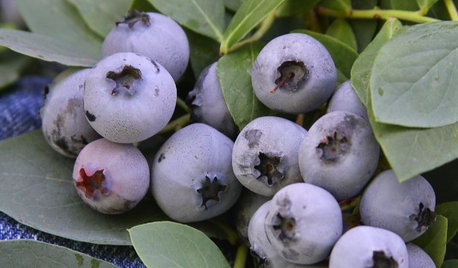First Okra
jcheckers
13 years ago
Related Stories

EDIBLE GARDENSA Formerly Weedy Lot Now Brims With Edibles and Honeybees
Photographers transform their barren backyard into an oasis filled with fruit, vegetables, honey, eggs and more
Full Story
SMALL HOMESHouzz Tour: A Family of 4 Unwinds in 540 Square Feet
An extraordinarily scaled-down home and garden for a couple and their 2 kids fosters sustainability and togetherness
Full Story
CHRISTMAS20 DIY Ornaments to Give or Keep
From classic to quirky, easy to more involved, these Christmas ornaments will perk up your tree or make a great gift
Full Story
FARM YOUR YARDIf You Have Room for Only One Summer Crop ...
Get an edible that’s long on flavor even if you’re short on space, with a long-time gardener’s favorite picks
Full Story
DECORATING GUIDESAn Expat’s Guide to Making a Home Away From Home
How do you stay balanced when each foot is in a different culture? You take a stand where you hang your hat
Full Story
FARM YOUR YARD6 Things to Know Before You Start Growing Your Own Food
It takes time and practice, but growing edibles in the suburbs or city is possible with smart prep and patience
Full Story
FEEL-GOOD HOME21 Ways to Waste Less at Home
Whether it's herbs rotting in the fridge or clothes that never get worn, most of us waste too much. Here are ways to make a change
Full Story
KITCHEN DESIGNHouzz Call: What’s Cooking in Your Kitchen?
Most of us turn to recipes, videos and culinary shows when we cook. Where do you set your cookbook, tablet or TV screen?
Full Story
GARDENING GUIDES15 Favorites for Your Summer Edible Garden
Get your summer garden off to a good start with these popular fruits and vegetables
Full Story
COMMUNITYTogetherness Take 2: Is a Cohousing Community for You?
Missing that sense of connection? Consider the new breed of neighborhood with a communal bent
Full StoryMore Discussions







Okiedawn OK Zone 7
p_mac
Related Professionals
Bridgetown Landscape Architects & Landscape Designers · Carson Landscape Architects & Landscape Designers · Allentown Landscape Contractors · Cincinnati Landscape Contractors · Eureka Landscape Contractors · Hollywood Landscape Contractors · Palos Verdes Estates Landscape Contractors · Placerville Landscape Contractors · Merrifield Landscape Contractors · Aberdeen Decks, Patios & Outdoor Enclosures · Atlantic City Decks, Patios & Outdoor Enclosures · Columbia Decks, Patios & Outdoor Enclosures · Glen Ellyn Decks, Patios & Outdoor Enclosures · Wentzville Decks, Patios & Outdoor Enclosures · Scotts Valley Decks, Patios & Outdoor Enclosuressoonergrandmom
elkwc
soonergrandmom
Okiedawn OK Zone 7
jcheckersOriginal Author
oldhousefreak
klo1
Okiedawn OK Zone 7
p_mac
Macmex
Okiedawn OK Zone 7
jcheckersOriginal Author
Okiedawn OK Zone 7
jcheckersOriginal Author
klo1
Okiedawn OK Zone 7
carsons_mimi
klo1
jcheckersOriginal Author
Okiedawn OK Zone 7
quailhunter
carsons_mimi
jcheckersOriginal Author
Okiedawn OK Zone 7
quailhunter
elkwc
Okiedawn OK Zone 7
quailhunter
Okiedawn OK Zone 7
jcheckersOriginal Author
quailhunter
slowpoke_gardener
Okiedawn OK Zone 7
jcheckersOriginal Author
Okiedawn OK Zone 7
jcheckersOriginal Author
jcheckersOriginal Author